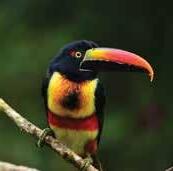
+ Lizzie’s Adventures in Costa Rica + A Biodiversity Hotspot + Meet a Local Business Owner + Pick the Perfect Pineapple + Can You Name That Bird?



+ Lizzie’s Adventures in Costa Rica + A Biodiversity Hotspot + Meet a Local Business Owner + Pick the Perfect Pineapple + Can You Name That Bird?

Dear Friend,
It’s a country that gave up its national military in 1949. Its Nicoya Peninsula is recognized as one of the five Blue Zones in the world, where the majority of residents live to be 100. And it’s made conservation a priority, protecting 28% of its land for wildlife.
Let’s face it — Costa Rica thinks a little bit differently. And we’re here for it! That’s why we named Costa Rica as our Campus of the Year in 2024.
In this issue, we’re sharing some of our favorite stories and insights about this incredible country. Learn how to select the best pineapple the next time you’re at the grocery store, or read how Road Scholar learning adventures have made a real impact on some of the locals we visit. I hope you’ll be inspired by Road Scholar participant Linda Meecham,w who has explored Costa Rica nine times, and finds something new to discover in each journey.
Whether you’re planning to visit or simply read about Costa Rica in our pages here, may you experience a taste of pura vida — the pure life.

Erika Bouchard Editor

In all things of nature there is something of the marvelous.
– ARISTOTLE
Costa Rica’s history is all about peace and democracy. After breaking free from Spain in 1821, it stayed relatively stable compared to its neighbors. Then, in 1948, the country made the remarkable decision to abolish its military after a brief civil war, deciding to use the money for education and health care instead. This set the stage for Costa Rica to become known as a peaceful and progressive place. By the 20th century, it earned the nickname “Switzerland of Central America” because of its strong democracy. Today, Costa Rica is famous for its environmental efforts, sustainable tourism and high quality of life.
1

People in the Nicoya Peninsula in Costa Rica live significantly longerthan-average lives. The combination of a healthy diet, strong family bonds and physical activity contribute to this high life expectancy.
4
2
Of Costa Rica’s over 200 volcanic formations, five are active volcanoes. Arenal Volcano is one of the most famous, known for its perfect cone shape and spectacular eruptions.
Costa Rica is home to the red-eyed tree frog, a vibrant and iconic species known for its bright colors and distinctive red eyes. They’re often seen clinging to trees in the rainforests, making them a favorite sight for nature lovers and photographers.
3
Costa Rica aims to be the world's first carbonneutral country. Over 99% of its electricity comes from renewable sources, primarily hydropower, wind and geothermal energy.
5
The money saved from having no standing army is invested in education, health and environmental protection.
There’s no wrong way to explore Costa Rica! Join us for a slower-paced look at Costa Rica or get active on a multi-sport adventure. You can even celebrate our 50th anniversary with us there next year!

Enjoy the natural history, biodiversity and friendly attitude of Costa Rica in a non-strenuous way that allows you to learn the true meaning of “pura vida.”
Length: 11 Days/10 Nights Meals: 29
Refer to 17988YWR online or when calling.
2024 Dates: Dec 10
2025 Dates: Feb 27, Mar 10, Mar 16, Mar 20, Mar 26, Mar 31. See more dates online.
Itinerary: Arrival San José, 1 night; coach to Sarapiquí, 3 nights; coach to Arenal, 3 nights; coach to Central Pacific Coast, 2 nights; coach to San José, 1 night; departure.
Per-person prices starting at:
$3,049 DBL | +$550 SGL
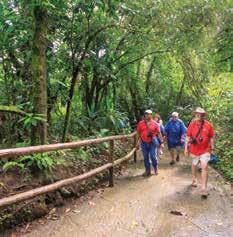

X
Come discover the meaning of “pura vida” and see why there’s no better place to raft, hike, kayak and learn authentic Latin dance than the protected waters and lands of Costa Rica.
Celebrate Road Scholar’s 50th anniversary in Costa Rica as you choose your own adventure to learn about its natural history, wildlife and thrilling activities.
Length: 6 Days/5 Nights Meals: 14
Refer to 21792YWR online or when calling.
Length: 11 Days/10 Nights Meals: 29
Refer to 19243YWR online or when calling.
2025 Dates: Jan 2, Mar 4, Mar 8, Mar 23, Mar 31, Apr 7, Apr 24. See more dates online.
Itinerary: Arrival San José, 1 night; Turrialba, 3 nights; Sarapiquí, 2 nights; Punta Leona, 3 nights; San José, 1 night; departure.
Per-person prices starting at: $3,099 DBL | +$0 SGL
2025 Dates: Oct 6
Itinerary: Arrival San José (Costa Rica), 1 night; coach to Sarapiquí, 4 nights; coach to San José and depart.
Per-person prices starting at: $1,599 DBL | +$270 SGL
I’m Lizzie from Road Scholar, and I recently journeyed to Costa Rica. It was quite a learning adventure! Here are some of my favorite photos from A Taste of Costa Rica so that you, too, can get a taste of what it’s like to spend a week as a Road Scholar.

Our group of learners hailed from all over the U.S., and we really bonded along this journey.


Deynor, our Group Leader from Costa Rica, is a certified naturalist, avid birder and talented wildlife photographer.

Follow the adventures of Road Scholar Lizzie on social media!

After a rafting lesson, we paddled down the river to spot howler monkeys, sloths and other wildlife.

the foot of a volcano

In La Fortuna, we came face to face with jaw-dropping Arenal Volcano, clouds masking its conical summit.

We enjoyed the local evening ritual, sitting cliffside while sipping sangria as the sun took its bow.

No wonder this is cloud-forest country. It felt like we were on top of the world.

In Costa Rica, a “soda” is a roadside stop for coffee, snacks or lunch. This one had views for miles.

With butterflies that flitted around us as we learned about them from an expert, it felt magical!

Our Group Leader spotted this species and so many other for us to tick off our birding lists!

Our hotel in the mountains overlooked the Nicoya Peninsula on the Pacific Coast from high above it.

Flora and fauna in every color of the rainbow greeted us wherever we went. Costa Rica is truly the most colorful country!

Stepping foot on the Pacific shore after viewing it from up in the mountains made our journey complete.
Since 2004, Linda has been to Costa Rica 11 times with Road Scholar, and she can’t wait to go back. For this well-traveled Road Scholar, Costa Rica has become somewhere personal — and life-changing.
“Pura vida” encompasses the idea of living and appreciating every moment to its fullest, a philosophy that’s reflected by the entire country. “The people of Costa Rica are incredibly warm and friendly,” confirms Linda.

“And they take immense pride in their history and culture. Pura vida means cherishing the simple things, like the breathtaking nature, food, music and dance traditions. It also means embracing a less hurried pace of life.”

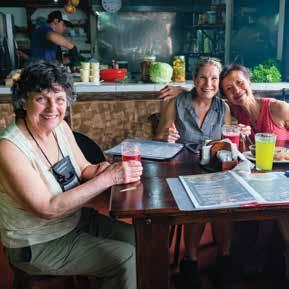
Coffee is deeply rooted in Costa Rica’s history and has had deep impacts on the country’s social, cultural and economic development. “They pick the berries by hand,” Linda says, “and more and more, the country is focusing on shade-grown coffee, which is better for the environment.
Now, even when I’m at home, I find myself only buying Costa Rican coffee because it has such a rich, aromatic flavor.”
That’s not the only thing bursting with flavor. “The fruits in Costa Rica, like mangoes, pineapples and bananas, taste so intense!” Linda enthuses. “They’re truly wonderful, and fresh fruits and veggies seem to be everywhere on menus.”

Learn more about Road Scholar’s Costa Rica Educational Adventures at www.roadscholar.org/CostaRica
In 2020, Costa Rica generated 99.8% of its energy from renewable resources. It has also established an extensive reforestation project, set aside 28 national parks and has protected over a quarter of its land. So intensive are its sustainability initiatives that Linda took her first journey in 2004 to learn about them firsthand.
Since then, her visits have heightened her awareness of the environment around her. “The diversity in Costa Rica is amazing,” she says, describing the wildlife.
“Four kinds of monkeys, two kinds of adorable sloths and a world of birds — almost 900 species! There are 12 major biomes.”
“In Costa Rica, there’s so much to do. You can be active or take it easy, but you're always learning something new,” she says. Hiking, river rafting, swimming, kayaking and dancing are only a few of the multi-sport adventures that Linda experienced. “I even overcame my fear of heights by whizzing through the forest canopy on a zip line and walking on hanging bridges over 200 feet above the river. Being in a group of people, I thought, ‘If others can, I can too.’”
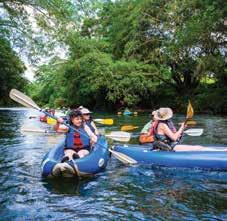

“I took my first solo journey to Costa Rica in 2004, and thanks to Road Scholar, my first experience was wonderful. When I’m with Road Scholar, I feel cared for and know I'll be exposed to incredible places and activities I wouldn’t find on my own,” Linda says. She feels that “people who take the time to truly understand Costa Rica, its culture, its people and its environmental initiatives will perhaps contribute to a better world. There’s no place on Earth I’d rather be than Costa Rica. I hope I get to see you there.”


Nestled between the Caribbean Sea and the Pacific Ocean on a narrow stretch of land known as the Isthmus of Panama, Costa Rica is a quintessential paradise on Earth. Lush rainforests, volcanic mountain ranges, two coastlines and mangrove forests punctuate this landscape and contribute to its remarkable beauty and biodiversity. In fact, Costa Rica is one of only 36 biodiversity hot spots worldwide. While this country makes up only 2.5% of our planet’s landmass, it supports more than 5% of the world’s biodiversity.
→ Costa Rica is the first tropical country to have stopped — and reversed
— deforestation
→ Since 1996, it’s been illegal to chop down forests without government approval. Farmers are now provided a monetary incentive to protect watersheds and conserve biodiversity.


→ Costa Rica is dedicated to protecting its environment and biodiversity with 28% of lands preserved

→ A total of 256 species of mammals live in Costa Rica.


→ Four species of monkeys — Squirrel, Howler, Spider and Capuchin — call Costa Rica home.
→ Two- and Three-toed Sloths, Costa Rica’s national animal, can be seen methodically moving about the trees.
→ Six species of wildcats, including the jaguar, puma, ocelot, margay, oncilla and jaguarundi, thrive in this unparalleled ‘catscape.’


→ Costa Rica’s rich and varied geography lends itself to 12 climatic zones — from cloud forests to coral reefs, mangroves to mountain rainforests — providing diverse habitats for more than 500,000 plant and animal species to adapt and flourish.
→ The Caribbean coastline stretches 132 miles, while the Pacific coastline extends 631 miles.
→ There are five active volcanoes in Costa Rica, and another 61 are dormant or extinct.
→ On average, Costa Rica receives 100 inches of rain annually, with mountainous rainforest regions getting up to 25 feet of rain in a year!
“BIODIVERSITY HOT SPOTS” are regions with exceptional biodiversity and high concentrations of unique species. They must contain at least 1,500 endemic vascular plants — found nowhere else on Earth — and less than a third of its original natural vegetation. These regions support endangered species, provide essential ecosystem services, preserve cultural heritage and contribute to global conservation efforts. Protecting hot spots is vital for preserving biodiversity, maintaining healthy ecosystems and ensuring a sustainable future.

Add to your birding life list as you search for macaws, motmots and more, or improve your digital photography skills in the heart of one of the world’s most beautiful landscapes.


Learn to get the most out of your digital camera as you join experts to practice exposure, composition and wildlife and landscape techniques in the colorful landscapes of Costa Rica.
Length: 9 Days/8 Nights Meals: 23
Refer to 15114YWR online or when calling.
2025 Dates: Feb 4, Feb 22, Mar 13, Aug 12, Oct 12, Nov 3, Dec 1. See more dates online.
Itinerary: Arrival San José, 1 night; Sarapiquí, 3 nights; San Gerardo de Dota, 3 nights; San José, 1 night; departure.
Per-person prices starting at:
$2,799 DBL | +$0 SGL
If Spotted Woodcreepers and manakins are on your birding life list, join us for an exploration of northern Costa Rica! An estimated 894 avian species call this country home.
Length: 11 Days/10 Nights Meals: 29
Refer to 22443YWR online or when calling.
2025 Dates: Mar 5, Apr 24, May 11, Oct 15, Nov 4, Dec 3, Dec 11. See more dates online.
Itinerary: Arrival San José (Costa Rica), 1 night; coach to Tempisque, 2 nights; coach to Caño Negro, 2 nights; coach to Sarapiquí, 2 nights; coach to Arenal, 2 nights; coach to San José, 1 night; departure.
Per-person prices starting at:
$3,149 DBL | +$350 SGL

Go where the birds are, not where the birders are, as you spot Scarlet Macaws at Carara, the Resplendent Quetzal in San Gerardo de Dota, motmots in San Vito and much more.
Length: 11 Days/10 Nights Meals: 29
Refer to 20616YWR online or when calling.
2025 Dates: Jan 26, Feb 7, Mar 9, Apr 22, May 7, Jul 16, Aug 6. See more dates online.
Itinerary: Arrival San José, 1 night; Carara, 2 nights; Golfito, 2 nights; San Vito, 2 nights; San Gerardo, 2 nights; San José, 1 night; departure.
Per-person prices starting at:
$2,999 DBL | +$0 SGL

I participated in activities I would never have done on my own, from walking over hanging bridges above the jungle canopy to whitewater rafting and boating on the rivers observing monkeys, lizards, coati, birds, bugs and crocs in the wild. I stepped seriously outside my comfort zone.
—DAWN, FROM SALEM, ORE., THE BEST OF COSTA RICA, EXPLORING NATURAL WONDERS (11586YWR)
As I was perusing Road Scholar’s Facebook page, a conversation about Costa Rica stood out to me, and I decided to reach out to its author. Dawn, from Salem, Oregon, is a Road Scholar veteran, and attended The Best of Costa Rica, Exploring Natural Wonders. As someone who has also journeyed to Costa Rica, I was curious about her experiences and how they compared with my own. I reached out to her on Facebook messenger and we had a great conversation about our adventures.
On my own first trip to Costa Rica this winter I had an experience that was a bit different from Dawn’s. I did see creatures up close that I had never seen in my life, from coati to birds to tarantulas to sloths. However, I must say that, at almost 76 years old and a committed and steady walker, I was nevertheless queasy about taking on hanging bridges, zip lining and whitewater rafting (I admit that I did sit in a rubber raft on a calm river and let someone else do the paddling).
Over the past five years I have watched myself become more of an observer than an active participant. There are joys to that, too, from watching the clouds around the Arenal Volcano from different angles and at different times of the day to observing coati, sloths, monkeys, sea turtles, tree frogs, fabulous toucans and other birds and even a beautiful but slightly horrifying tarantula.



Find all of Road Scholar’s learning adventures in Costa Rica www.roadscholar.org/costarica
Since I’ve been back, I have been talking to other travelers about Costa Rica and reading about what folks on Road Scholar’s Facebook Groups have to say. I have come to realize more of what there is to do in Costa Rica, and I am also understanding that I can take baby steps (and perhaps eventually adult steps) on my next adventure there.
I know that I am not the only one who has felt frightened to jump into some activities that others are doing. And I
must admit that I did regret not going horseback riding on the beach with several of my travel mates because they seemed so thrilled by it. Of her activities, Dawn says:
“I found the journey mentally challenging, culturally challenging and a little bit physically challenging. I never thought, at age 69 (and really not a ‘water person’), that I would go whitewater rafting for the first time in my life. The rapids were low level, safety and preparation were the highest priority, and it was absolutely exhilarating.”
Taking on the white water and other activities seems to have changed Dawn’s perspective and her feelings about what she can accomplish.
“I am an absolute cheerleader for the Road Scholar programs, because they are such deeply experiential learning journeys. Each of these educational adventures brings with it a feeling of personal accomplishment. Ultimately, I felt renewed and refreshed in mind and body for having participated.”
So, while I thoroughly enjoyed lying in a hammock near Manuel Antonio National Park, swinging slowly and watching the waves break (not that there is anything wrong with that), I do think that on my next visit to Costa Rica — Road Scholar offers 13 different Costa Rica experiences — I might even take a chance to find out what more I am able to do. I can even see myself stepping out of my comfort zone and zip lining (slowly) over the misty rainforests.
Barbara Winard has earned degrees in English literature, journalism and, later in life, gerontology. For the past 25 years she was a senior editor and writer of online encyclopedia articles for children. Prior to that, after returning from a long trip to Asia, Barbara was hired by the Asia Society in New York City to produce films and print materials about Asian culture. She was also a producer and writer for New York City’s public television station, WNET/13.
Looking for some HELPFUL PHRASES to help you get around COSTA RICA? Look no further! Learn about the pure life — “PURA VIDA” — and find out what makes Costa Rica “TUANIS,” or “cool!”
Literally meaning “hut,” common way to refer to one’s home. (“Mi choza.”)


The literal translation is “pure life,” but it’s used to convey a positive outlook on life, similar to “life is good” or “everything’s great.”
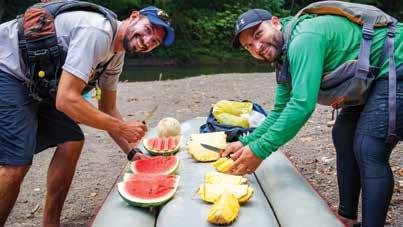
Colloquial term for “dude” or “buddy.”
Costa Rican sugar canebased liquor

An informal way to address someone, like “you.”

Tica Tuanis “Cool” or “awesome.”
A traditional Costa Rican dish of rice and beans. A Costa Rican person, male (Tico) or female (Tica).
Refers to Salsa Lizano, a popular Costa Rican condiment used on many dishes.

HOLA: Hello!
ADIÓS: Goodbye!
¡MUCHO GUSTO!: Nice to meet you! ¿CÓMO ESTÁ?: How are you? POR FAVOR: Please.
GRACIAS: Thank you. DE NADA: You’re welcome.

Costa Rica — Road Scholar’s 2024 Campus of the Year — has been drawing Road Scholars for years. As our adult students experience the beauty, flora and fauna of this extraordinary country, Road Scholar is committed to making a difference in the communities here.
Since 1999, Road Scholar has brought more than 46,000 older adults to Costa Rica on nearly 3,000 different programs. With a steady, perennial presence, Road Scholar generates business and enables residents to offer services. In doing so, these
individuals make a sustainable living for themselves and their families.
Two hours from San José, Sarapiquí is home to nature reserves and lush rainforest. The Selva Verde Lodge, one of Road Scholar’s trusted anchors
in this region, and The Sarapiquí Conservation Learning Center (SCLC) are found here. Over the years, Road Scholar has continued to support the Learning Center and its mission to provide community programs such as English classes, computer literacy, environmental education and afterschool activities. By offering residents opportunities to improve their job prospects, the SCLC helps residents cultivate more environmentally sustainable occupations to improve their job prospects.
Resident Geisel Valerio Hidalgo shares her experience with Road Scholar:
RS: How has Road Scholar made a difference in your community?
GEISEL: Thanks to Road Scholar groups, I have started my own Arepas and Cheese business and I teach cooking classes to earn the income I need for my children's education. Road Scholar helps support the Learning Center and the development of our community and our local schools with donations of school supplies.
RS: Tell me about yourself and your family.

INGREDIENTS:
Green plantains
Vegetable oil
GEISEL: My husband and I live with our three children, Vladimir, Adrian and Kevin, on our dairy farm in La Chilera, El Roble de Sarapiquí. We produce cheese and milk and grow plantains, peppers, naranjilla, blackberries, yucca and sugar cane.
RS: Does the Learning Center help you distribute and sell your food?
GEISEL: The Learning Center helps us sell our cheese, milk and other products. I also teach cooking classes, offer tastings and lead craft demonstrations for the many Road Scholar groups who visit.
RS: What is your favorite recipe to cook?
GEISEL: Patacones!

Sea salt
DIRECTIONS:
Peel the green plantains, then cut them into 2-inchlong pieces. Fry the pieces in 1 to 2 inches of hot oil for 5 minutes. Remove the plantains from the oil and smash them with a tortilla press or plate into flattened discs. Fry a second time in hot oil for another 5 minutes until tender. Remove them from the heat with tongs and drain the excess oil on a paper towel. Sprinkle with sea salt to taste, and serve with chimichurri, refried beans, grated cheese, guacamole or salsa.
Planning your Costa Rica learning adventure? Figuring out what to pack can be a puzzle, especially with the country’s diverse microclimates — dozens of them! Sure, it’s mostly warm and humid, but you might encounter everything from rainforests to cooler mountain peaks. So, your packing list will need a bit of everything to stay comfy and ready for any Costa Rican surprise!
1 QUICK-DRY CLOTHING TO STAY COOL: Costa Rica's hot climate demands quick-dry clothing. Pack enough changes for sweaty days.
2 OUTFITS FOR EVERY ADVENTURE: Pack versatile outfits for each activity — sweat through one? No problem, you've got backups!
3 LAYERS FOR VARIED TEMPERATURES: Bring a long-sleeve shirt, sweater or sweatshirt for cooler evenings at higher elevations.
4 BEACH ESSENTIALS: Two bathing suits and beachwear cover all your swimming and sunbathing needs.
5 Bonus Essentials
5 RAINFORESTREADY: A water-resistant jacket or poncho, plus waterproof shoes, prepare you for unexpected showers.
6 SUN PROTECTION ESSENTIALS: Don't forget a hat, sunglasses and reeffriendly sunscreen for sunny days.
7 FOOTWEAR FOR ADVENTURES: Pack sturdy, broken-in hiking or running shoes with good tread for exploring.
8 BUG DEFENSE AND HEALTH: Include insect repellent, aloe vera and hand sanitizer. 1 2 3 4 5
LAUNDRY BAG: Keep dirty clothes separate from clean ones.
WATERPROOF DAY BAG: Indispensable for carrying daily essentials and gear.
MICROFIBER TRAVEL TOWEL: Lightweight and quick drying for beach days and unexpected swims.
TRAVEL CLOTHESLINE: Handy for drying swimwear and towels in humid climates.
COMFORT ESSENTIALS: Earplugs and an eye mask ensure a restful sleep anywhere.
Check out our Road Scholar store for merch you may want to pack!
If you’ve been searching for a comprehensive exploration of Costa Rica, you can’t go wrong with these learning adventures. Learn about its natural preserves, explore its coastline and sample its coffee!


With more than 5% of the world’s biodiversity, 121 volcanic formations, 801 miles of coastline and hundreds of endemic birds, Costa Rica is a true Mecca for nature lovers to explore.
Hike cloud forests, explore volcanic trails, learn about biodiversity, study delicate ecosystems and savor the art of coffee-making and good conversation as you discover Costa Rica.

Learn the story of Costa Rica’s natural wonders as you explore cloud forest reserves, the Savegre River and world-class Manuel Antonio National Park with plenty of time on your own.
Length: 12 Days/11 Nights Meals: 31
Refer to 11586YWR online or when calling.
2024 Dates: Dec 21, Dec 31
2025 Dates: Mar 16, Mar 22, Mar 23, Apr 2, Apr 22, Apr 24, Apr 27. See more dates online.
Itinerary: Arrival San José, 2 nights; Tortuguero, 2 nights; Sarapiquí, 2 nights; Arenal, 2 nights; Punta Leona, 2 nights; San José, 1 night; departure.
Per-person prices starting at:
$3,299 DBL | +$0 SGL
Length: 9 Days/8 Nights Meals: 23
Refer to 8577YWR online or when calling.
2024 Dates: Dec 31
2025 Dates: Feb 23, Mar 5, Mar 7, Mar 17, Mar 18, Mar 21, Mar 27. See more dates online.
Itinerary: Arrival San José, 1 night; Sarapiquí, 2 nights; Arenal, 2 nights; Monteverde, 2 nights; San José, 1 night; departure.
Per-person prices starting at:
$2,499 DBL | +$430 SGL
Length: 9 Days/8 Nights Meals: 20
Refer to 20774YWR online or when calling.
2024 Dates: Dec 5, Dec 12
2025 Dates: Jan 11, Jan 30, Feb 8, Feb 23, Mar 3, Mar 6, Mar 20. See more dates online.
Itinerary: Arrival San José, 1 night; Savegre Nature Reserve, 2 nights; Rafiki Safari Lodge, 2 nights; Manuel Antonio National Park, 2 nights; San José, 1 night; departure.
Per-person prices starting at:
$2,649 DBL | +$600 SGL

Costa Rica boasts lush rainforests teeming with wildlife, exotic birds, butterflies and flowers in every vivid color of the rainbow. And the people of Costa Rica are fiercely united in saving, reforesting and protecting these wildlife habitats. They do it with a feeling of gratitude and appreciation for the simple joys each day brings, a slower and more content lifestyle they call ‘pura vida.’ One specific place this spirit is exemplified is at Selva Verde.
The Selva Verde Eco-Lodge
In a tropical paradise close to the equator called Sarapiquí, the northern lowlands brim with volcanoes and sparkling rivers flowing into the Caribbean Sea. On A Taste of Costa Rica and other Road Scholar programs, you’ll find Selva Verde, an eco-friendly lodge on a mission to conserve, sustain, reforest and educate. A visit here includes full immersion into the heart of a tropical rainforest, a chance to connect with local families in the surrounding communities and an opportunity to learn about precious microclimates and the species they support.
Selva Verde eco-lodge is home base for the nonprofit Sarapiquí Conservation Learning Center (SCLC), dedicated to teaching the world about sustainability with a hands-on approach that links local community members and visitors. You’ll meet families who are happy to demonstrate their organic farming methods, sustainability practices and lifestyle. Before you know it, you’ll find yourself in a kitchen helping to prepare tortillas, arepas, marmalade and perhaps even extracting sugar cane. All while learning about the ways in which these families grow and harvest small crops such as black peppercorn, fruit, coffee beans and cacao.
Selva Verde and the SCLC also support the families whose private rainforest reserves give you numerous
At Selva Verde, traverse a hanging bridge and hike through a rainforest along the Sarapiquí River.
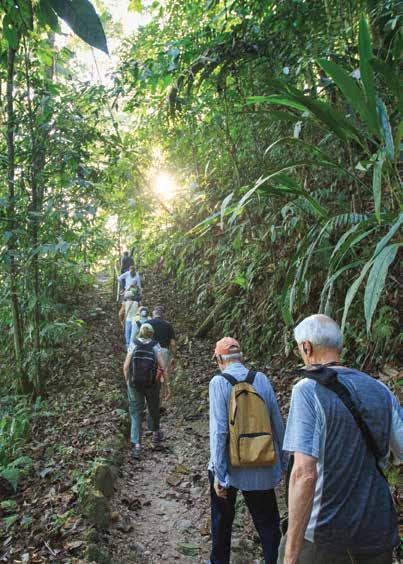
opportunities for birding, hiking, rafting and tiptoeing across hanging bridges above the forest canopy. On Road Scholar programs, your visits to places like this help support the families who own those properties — which in turn keeps the families from having to sell off parcels of their precious rainforests and lands (which more often than not would result in the felling of trees).
The SCLC also believes in educating children from a young age about conservation and sustainability, and provides English classes, computer proficiency lessons, school supplies and scholarships to those in need. This organization understands that Costa Rican children are the country’s future advocates and wants to provide them with the knowledge it’ll take to protect against advancing climate change.

Road Scholar is committed to doing what we can to protect the environment, respect and preserve the diversity of human cultures and create a more sustainable future for generations to come. Whenever we can, we prioritize sustainability certified hotels that use locally owned and operated services, and choose restaurants that serve locally sourced meals.
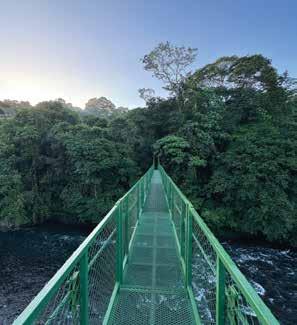
Selva Verde sits right in the middle of the Mesoamerican Biological Corridor and the Costa Rican Bird Route, and it's invested in ensuring a pathway for migratory birds going from Southern Mexico and Belize all the way to Panama (and back). All of which makes for a magical birding paradise. In fact, some birds find their stop in Costa Rica so pleasant that they decide to stay (can’t say we blame them!)

In a quest to reforest parcels of land that were sold off in the past, Selva Verde continues its mission to protect and provide forested pathways that connect one rainforest to the next. This will ensure the future of biodiversity and continue to give birds a safe place to land along their migratory journey.
With its commitment to the local environment and community, it's no wonder that Selva Verde is a favorite accommodation on Road Scholar learning adventures. As we look forward to many more years of exploring the natural wonders of Costa Rica, we are delighted that Road Scholars can experience the region in such a sustainable and impactful way.
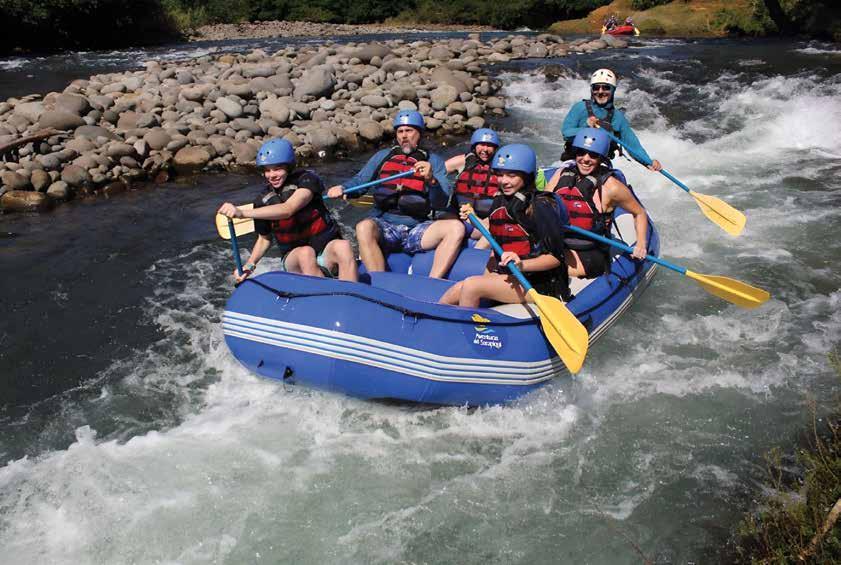
Swanee Maddox has a long history of learning about the world through travel — growing up in the 1950s, her family moved around as they followed her father’s job as an economist. “We lived in Mexico City for two years, and living there was so educational,” she remembered. Swanee wanted to ensure that her grandchildren had that same cultural education and love for travel, so she decided to reserve a Road Scholar program just for her family. In December of 2021, they attended a learning adventure with Road Scholar in Costa Rica.
“I wanted to get them out of the U.S. to see the rest of the world. That was significant to me,” said Swanee. “I think many kids in the U.S. have no idea how the rest of the world lives.”
After touching down in Costa Rica, Swanee and her family spent nine days in the Sarapiquí, Arenal and Jacó areas of Costa Rica learning about
volcanoes, wildlife and so much more. Swanee knew the kids would love zip lining, whitewater rafting, snorkeling and ocean kayaking, but she was amazed at how much they liked the chocolate-making demonstration and the nighttime bat lectures. For Swanee, it was the perfect amount of learning for the whole family.
The Maddox family was hosted in Costa Rica by their local Group Leader, Eric, and their coach driver, Luis. “Eric and Luis were so congenial; we bonded so well,” Swanee said. “They were funny and good with the kids. And as much as the kids enjoyed it, thanks to Eric and Luis, the adults really enjoyed it, too.”
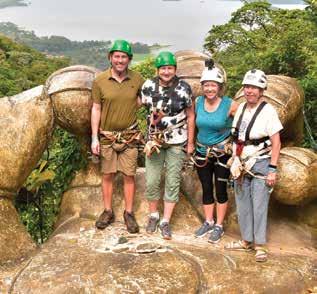
Luis’ and Eric’s connections to the local community enabled the Maddox family to visit the homes of local Costa Ricans and engage in activities that they might not have been able to otherwise. “Eric knew somebody at a local animal rescue and got them to take us around to see sloths that had been injured and rehabilitated,” Swanee said. “We even got to see them release a sloth back into the wild! That was one of the highlights for my daughter.”
Swanee recalls that when she was growing up, her cousins lived far away and were much older in age than she was, so they didn’t share a close relationship. This was one of the reasons why this family adventure was so important to Swanee.
“We were together for 10 days, 24/7, learning and doing fun things — everyone really got to know each other on a much deeper level. My daughter said her children really want to go with their cousins wherever we go now.”

Reserve an entire Road Scholar program just for your family, friends, club or organization! Just select a program, we handle all the details — and you take the credit. Once you enroll 20 paying participants, we’ll waive the program cost for the next participant or give 5% per person back to your organization.
Learn more at www.roadscholar.org/groups or contact us at groups@roadscholar.org or (877) 209-4634.
Share the best of pura vida with your grandkids or family on these learning adventures designed for multiple generations!

Discover a world of exotic wildlife and unique species!
Length: 10 Days/9 Nights Meals: 26 Refer to 3636YWR online or when calling.
y For grandchildren ages 8 - 17.
2025 Dates: Jun 14, Jun 17, Jun 23, Jun 27, Jul 5, Jul 7, Jul 10. See more dates online.
Itinerary: Arrival San José, 1 night; coach to Sarapiquí, 3 nights; coach to Arenal, 3 nights; coach to Punta Leona, 2 nights; coach to San José and departure.
See dates and prices online.
FAMILY PROGRAM OFFERED:
For three generations (grandchildren ages 8 & up). Length: 10 Days/9 Nights Refer to 20797YWR online or when calling.
See dates and prices online.

X Costa Rica
River raft, swim and hike through the wild landscapes.
Length: 9 Days/8 Nights Meals: 23 Refer to 23616YWR online or when calling.
y For grandchildren ages 9 - 17.
2025 Dates: Mar 29, Jun 30, Jul 13, Aug 5, Dec 23
Itinerary: Arrival San José, 1 night; Monteverde, 2 nights; Rincon de la Vieja, 2 nights; Papagayo Peninsula, 3 nights; departure.
See dates and prices online.
FAMILY PROGRAM OFFERED:
For three generations (grandchildren ages 9 & up).
Length: 9 Days/8 Nights
Refer to 22538YWR online or when calling.
See dates and prices online.
Costa Rica has a microclimate that’s ideal for growing pineapples. As the number-one exporter of the fruit, here are some fun facts from an expert. The next time you’re at the market, keep in mind that you’re not looking for a ripe pineapple (they’re already shipped ripe) but for fermentation. Here’s how to choose the best one!
1
DON’T SMELL IT, squeeze it, knock on it, or pull out the center leaf. Regardless of what ‘secret’ you’ve been using, none of these methods work. Be gentle with each pineapple, so as not to ruin them for others.
2
THE COLOR: You’re not looking for a yellow pineapple. Choose a pineapple that’s a mix of green and yellow … but a little more green than yellow.

THE CROWN: It should look fresh and healthy, with nice, firm, green leaves.
3 4
THE TEXTURE: Your pineapple should be firm, not soft. You can discern this gently, without squeezing.
5
THE FINAL TEST (AND BEST-KEPT SECRET): To find out if you have a winning pineapple, grab the bottom, smallest leaf of the crown, closest to the pineapple itself. Then, hold the entire pineapple up by that leaf. If the little leaf can support the entire weight and the pineapple doesn’t fall, you’ve got yourself a winner!
Be sure and eat your pineapple as soon as you can (the bottom’s the sweetest part)! Don’t let it sit on your kitchen counter for days (if you must, put it in the refrigerator to keep it cold).
The next time you’re choosing a bag of coffee beans at the market or trying to decide which brew to order at your local coffee shop, here’s a glimpse into what goes into growing and harvesting Costa Rican coffee cherries!

The ideal elevation for growing Arabica beans is 5,000 to 7,000 feet above sea level. It takes seedlings over a year to become hardy enough to plant in a field, another year to get a bloom and at least seven months to yield the first harvest. Plants will then produce for about 30 years.


the fruit, washing & drying the beans
The outer skin of the handpicked beans — the cascara — is the red ‘cherry.’ Under that, the mucilage is a sticky, honey-like coating in the pulp that surrounds the seed. A wash process presses and squeezes the fruit, and a centrifuge removes the mucilage. Then, the beans are dried for a few weeks in a greenhouse.


Once the beans are dry, a machine peels the parchment down to the green bean. Then, the coffee beans are sealed in plastic bags inside canvas sacks and left to rest for at least three months. That’s how the oils, taste, acidity and aromas develop before they’re shipped to coffee roasters and shops.

Costa Rica exports 95% of its coffee. But if you’re visiting the Don Juan Coffee Farm in Costa Rica, you’ll taste coffee that was grown right there. Their roasting methods take 22 minutes to produce a light roast, 24 minutes for a medium roast and 26 minutes for a dark roast. Mere minutes make the difference in taste.

When you buy a cup of coffee (or a bag of whole or ground beans) from your local coffee shop, those beans have been roasted on site or at a roastery. The roasting time, the age of the beans before they’re roasted and how long after roasting you drink the coffee all impact the flavor.
Here’s a myth-buster about your coffee Believe it or not, there is basically no difference in the amount of caffeine between light, medium or dark roast coffees, no matter which beans you’re trying. Dark roast has no more caffeine than light roast (or vice versa). The roast affects only the flavor profile — not the caffeine level!
We hope you’ve been inspired by the stories from our 2024 Campus of the Year. If you’d like to read more, including explorations of nature, culture and cuisine, here are a few of our suggestions.

Costa Rica After Coffee: The Co-Op Era in History and Memory
Lowell Gudmundson
You might think of coffee as just a morning beverage, but its industry has affected the politics, society and economics of Costa Rica as a country. Learn more about the history of this crop and how it is still influencing Costa Rica today.

the
Steve Bird
Hundreds of avian species call Costa Rica home. Whether you plan on traveling to spot them in person or you just enjoy beautiful wildlife photography, learn more about the birds of Costa Rica through this book.

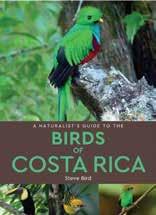
Volcanoes: Crucibles of Change
Richard V. Fisher, Grant Heiken and Jeffrey B. Hulen
Costa Rica is a country dotted with volcanoes, but how much do you know about these landforms? Discover the different types of volcanoes and how they are formed through this heavily illustrated book.
Central American Cookbook: A Journey Through 50 Authentic Recipes From Costa Rica, El Salvador, Guatemala, Panama, And More
Carla Hutson
Love to cook? Learn about Costa Rica and other Central American countries by immersing yourself in their cuisines and cooking up some delicious new recipes through this cookbook!
Robin Kazmier and Gregory Basco
Costa Rica is a global example for sustainability and conservation, and its national parks are just one part of that. Delve into some of these parks and enjoy stunning photographic looks at the natural wonders of Costa Rica.

You can find all these books and many more online at www.bookshop.org/shop/roadscholar
(P.S. Did you know that your Bookshop.org purchase can benefit Road Scholar’s efforts to support lifelong learning? Explore our variety of book lists to find even more reading recommendations, and continue to learn while supporting Road Scholar!)
Costa Rica is home to an estimated 903 species of birds and is predominantly considered to be a birder’s paradise. How many of these feathered friends can you identify?
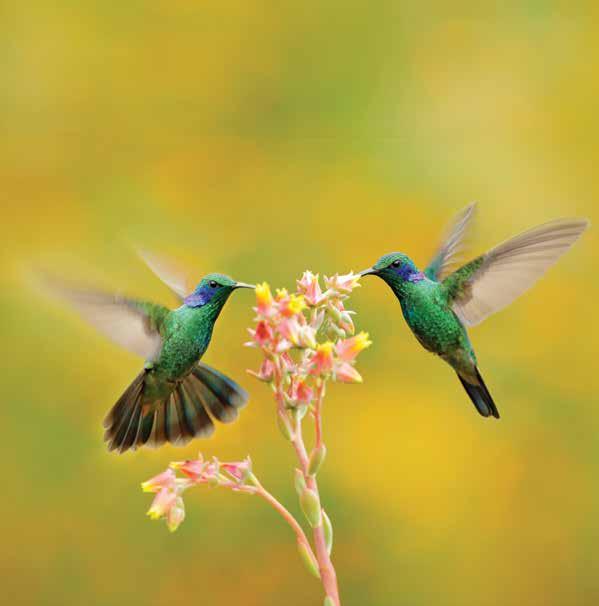

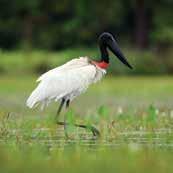


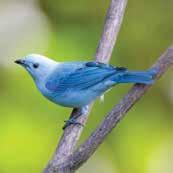
Costa Rica is home to more than 50 species of hummingbirds. DID Y
